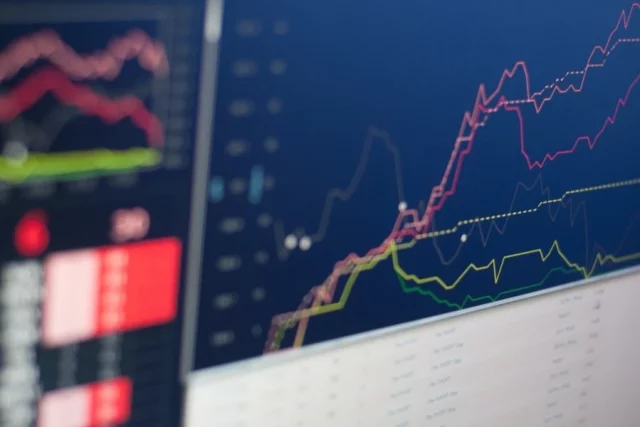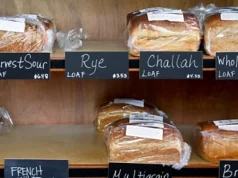Many forex traders employ candlestick patterns as part of their technical analysis toolset to identify prospective trading opportunities like on the platform trading view. These patterns emerge from the asset’s price behavior and can reveal a lot about how the market is doing and where prices may go in the future. This article will go through the various candlestick patterns, how they form, and how forex traders may use them.
What Are These Enigmatic “Candlestick Patterns?”
Candlestick patterns are graphical representations of price activity that may be used to spot possible trading opportunities in the forex market. These patterns happen because of how the price of goods change over a certain period, usually a day or a week.
These patterns are made by adding an asset’s high and low prices to its opening and closing prices. The similarities and contrasts between these designs are then investigated. Following that, the prices are plotted on a chart, resulting in a candlestick with a body in the center and two wicks emerging from its extremities. The “body” indicates the range of values between the opening and closing prices, while the “wick” represents the highest and lowest values seen during the time period.
There are several types of candlestick patterns, each with its own set of traits and market consequences. Some of the most popular candlestick shapes are an engulfing candle, a hammer, a shooting star, and a doji.
Variations On Candlestick Chart Patterns
When an asset’s opening price and closing price are so close to each other, the candle’s body is either very small or not there at all. Doji candlesticks can be seen as a sign that a trend is about to change because they show hesitation or a lack of momentum in the market.
A hammer candlestick shows up when an asset’s opening and closing prices are very close to the bottom of the period, but the asset still manages to go up and close at a higher price than it opened at. A long wick on a hammer candlestick shows bears were in charge when the market opened. However, bears may be losing ground if the market closes in a positive direction. In technical analysis, hammers are frequently seen as bullish reversal shapes.
When an asset’s beginning and ending prices are both near the top of the period, but the asset manages to sell off and close at a lower price than it opened, the ensuing candlestick pattern is known as a shooting star. A shooting star candlestick with a lengthy wick implies an upbeat start to trading. On the other hand, a bearish close indicates that the bulls are losing ground. Bearish reversal patterns are frequently noticed in the form of shooting stars.
In the enveloping pattern, there are two candles: a little one followed by a much larger one. The tiniest candle goes out first in the circular sequence. When a smaller candle is “engulfed” by a bigger one, it indicates a significant shift in emotion, either from positive to negative (in the case of a bearish engulfing pattern) or from bearish to bullish (for a bullish engulfing pattern). Engulfing patterns are frequently used in technical analysis as powerful reversal signs.
How To Use A Wide Range Of Candlestick Patterns
Candlestick patterns can be employed as solo signals or as part of more comprehensive trading strategies by Forex traders. Here are some recommendations for using candlestick patterns in forex trading:
Candlestick patterns should be used in conjunction with other technical indicators and research tools to corroborate potential transactions. If, for example, a hammer candlestick forms, traders might think that a bullish reversal pattern is in play, but they should wait for more proof.
Reading candlestick patterns necessitates considering the market as a whole. Examine the context. A doji candlestick, for example, may signal hesitancy when the market is moving, but its significance may be diminished when the market is trading in a narrow range. When interpreting candlestick patterns, traders must also analyze the elements that drive the market and the overall market mentality.
Use many time frames: Candlestick patterns may be beneficial on charts of varying lengths, from daily to weekly to monthly. Traders can better understand the market trend and find potential trading opportunities by analyzing data across many time frames.
Appropriate hazard management is critical when trading with candlestick patterns, like with any other trading strategy. This category includes methods like utilizing stop-loss orders, trading with suitable position sizes, and spreading your money over many markets.
Candlestick Pattern Instructions For The More Experienced
Even though the last section discussed the basics of trading with candlestick patterns, this section will discuss some more advanced ideas that traders should know.
Many traders use several candlestick patterns to uncover attractive trading opportunities, demonstrating that candlestick patterns are not confined to a single candle. A trader would look for a bullish engulfing pattern and then a hammer pattern to figure out how likely it is that the trend will change.
Combining candlestick patterns with trend lines might aid in confirming potential transactions. If a bearish engulfing pattern emerges on a chart with a downward trend line, it may indicate a trend reversal.
Candlestick patterns may be used by technical analysts to determine where support and resistance levels will be in the market. The comparison of trends to historical data can help with this. If a trader detects a hammer pattern building at a strong support level, this might hint at a trend reversal.
How To Predict Market Volatility Using Candlestick Patterns
Traders may use candlestick patterns to estimate when the market is likely to be more turbulent. For example, if a trader notices a shooting star pattern at the end of a long run, it might indicate that the market is overbought and a sell-off is approaching. This would be the case if the market continued to rise.
Conclusion
Candlestick patterns provide Forex traders with a great technical analysis tool for locating attractive trading opportunities. Traders may enhance their trading performance and chances of success by studying the various candlestick patterns and learning how to utilize them in conjunction with other technical indicators and analytical tools. Remember that candlestick patterns should be combined with adequate hazard management measures to ensure that any prospective transactions are executed prudently. To summarize, candlestick patterns may be a useful tool for any trader; nevertheless, it is necessary to approach their use with a comprehensive grasp of their limits and the necessity for confirmation from other technical indicators.














